Remind me to go on walks more often. I was passing by one of my favorite ephemera shops Stuff Modern and remembered they have a real convenient (and well decorated!) bathroom upstairs that I needed to use.
So I popped in, and stumbled upon this:
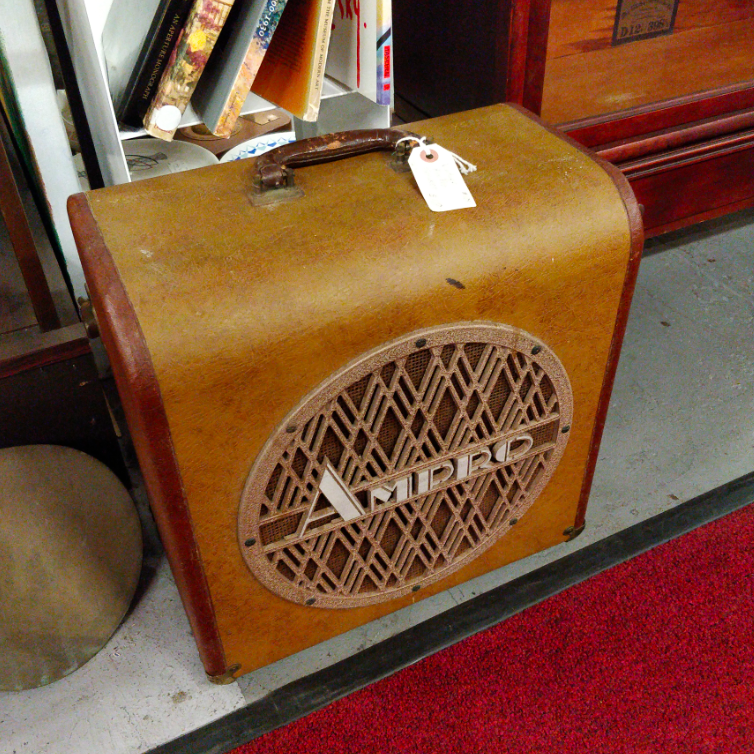
It’s an Ampro 12″ speaker cabinet with a glorious art deco metal faceplate. The grill cloth behind the faceplate is unscarred. The back of the cabinet is removable and latched on like a sewing machine case. The handle is spring-loaded and automatically stows itself down when not in use. It was $119 and looked as “like-new” as anything from the ’40s possibly can.
What did we ever do before connected smartphones? Probably get ripped off on antiques a lot more often. I sat on a nearby Danish modern lounge chair ($850) and Googled the thing. I saw much more beat-up and incomplete versions going for twice as much on Reverb and Ebay.
Turns out Ampro was a projector company. These speakers were accessories to their “portable” projectors and made to play sound for films.
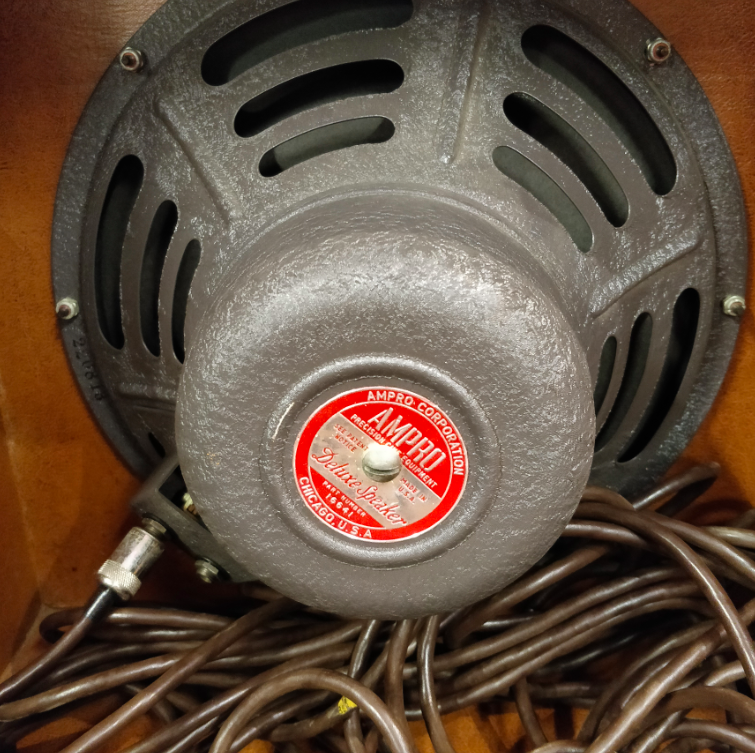
Further reading revealed the speakers (while branded “Ampro”) are actually made by Jensen (model P12M). The speaker looked very clean and the cone was still fully intact. The stamp on the speaker indicates that it was either made in either 1948 or 1958, but I’d guess ’48 by the overall look of the package. “Vintage Jensen Speaker” is already enough to make me consider dropping $100, so I snapped the cabinet up. I just so happened to be in the market for a compact speaker cabinet for a project.
What project you ask? Let’s fast forward to the result:
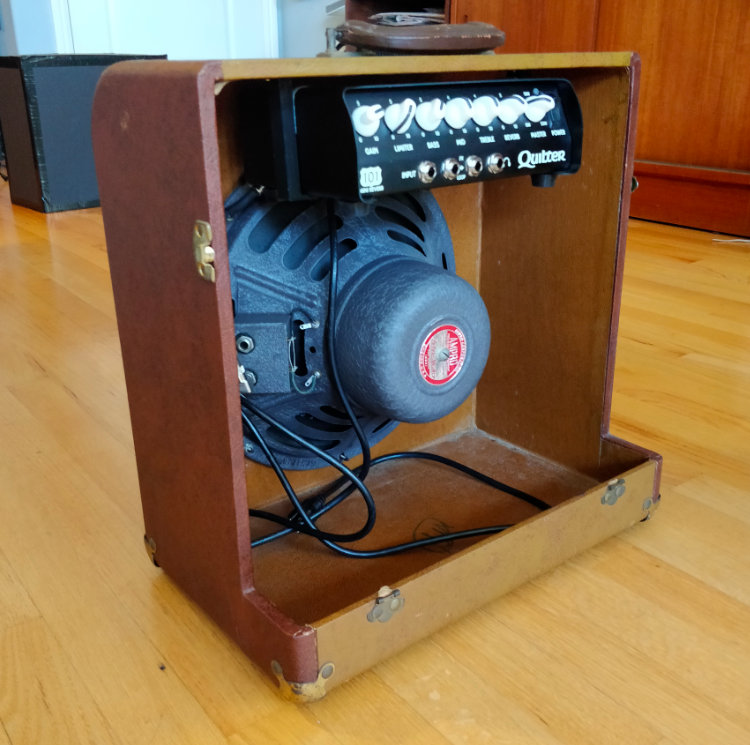
I have a backpacker-level obsession with light gear. Maybe it’s due to living in the city and taking the public transit, or maybe it’s because of my aging joints. This obsession has resulted in a meticulous Google sheets document entitled “amp components” in which I have all the parts of my rig line-itemed with their respective weights. I stare at this spreadsheet and click on various combinations, adding them up. Over 20 pounds? What am I, Superman? 18? Getting there. 15? Nice. 12? The dream.
Quilter has done an amazing job at making lightweight amp heads that essentially strive to sound like classic Fender tube amps (though they won’t say that directly, of course). After getting the 101 Reverb (affiliate link) model, I leave my Fenders at home now. At 2 pounds, I have something that sounds great, is louder than anything else I own, performs consistently in all venues I’ve thrown at it, wont break my back, and requires little/no maintenance. This is heresy to some, but it’s often so to those who don’t actually go out and play on the regular.
I had another cabinet I was using with the Quilter, but I was basically just placing the head down at the bottom of the cab. In dark bars, it was really inconvenient to reach down and behind for the tone/volume controls, so for this cabinet I decided to try mounting it to the top. Only thing was, I didn’t want it to require tools to remove, so I could use the head or cabinet in other combinations. I even wanted to avoid thumbscrews or wing nuts if possible, since they can rattle.
Naturally, I came back to using custom 3D-printed designs. I brainstormed a couple of days and decided to try a sliding rail, almost like a fitted dovetail joint. The head would slide in and out of it and there would be just enough friction to keep it in place, here are the results:
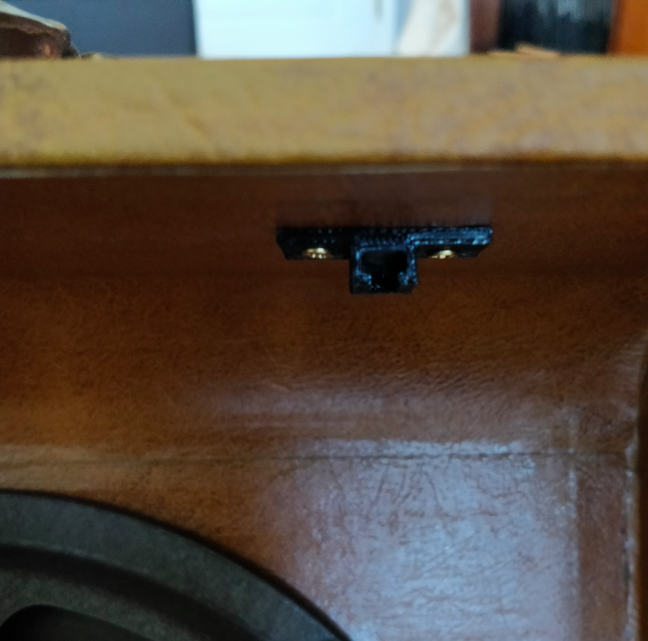
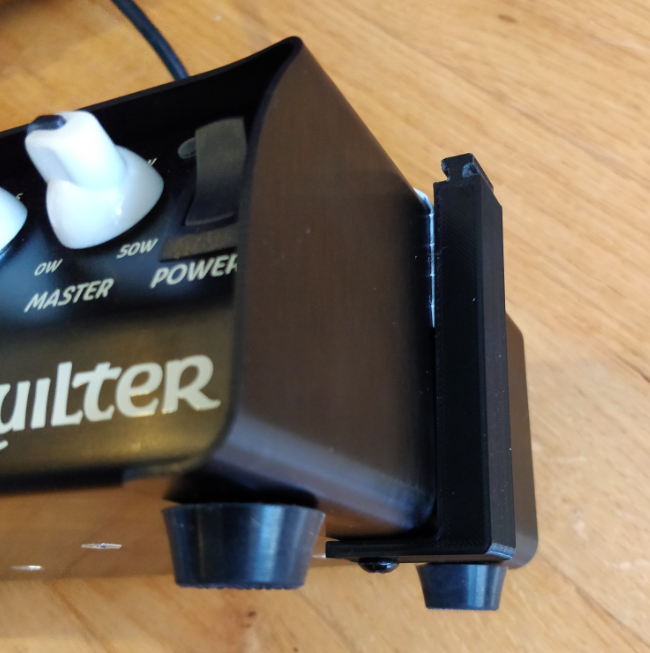
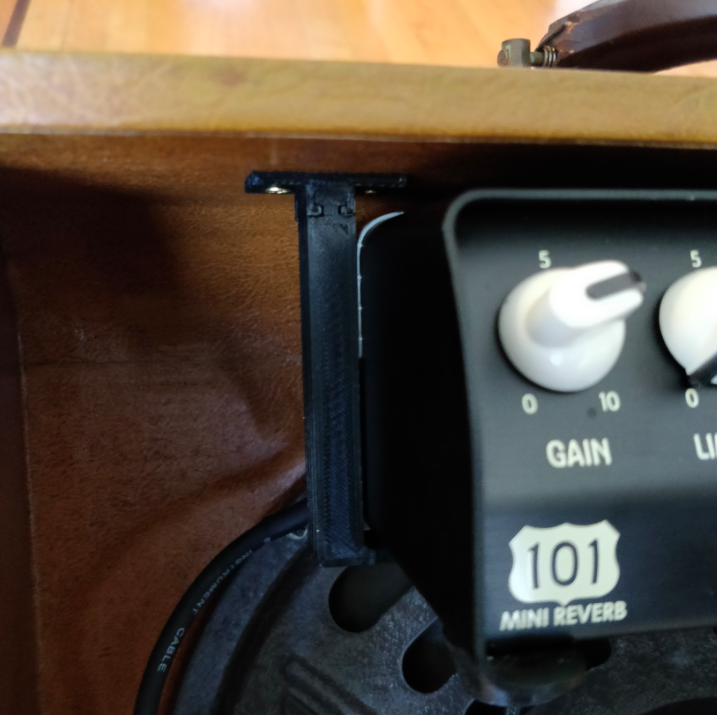
The setup works better than I expected, though at 2 pounds it is a relatively light load. I would not mount something that weighs more than 4 pounds this way. Once installed, I prodded, tugged at it, and uttered the timeless man-cliche: “oh yeah, that’s not going anywhere”. The head does not slide out with gravity or vibration. It’s pretty intuitive and fast to guide it in and out using feel alone.
Most importantly, what’s the overall weight? 18 pounds with the back, and 15.7 pounds with the back off. Not bad. I can bring that down 3 pounds if I consider putting in a modern neodymium speaker, but the Jensen sounds so damn good I might never want to.
Current concerns are that back and forth rocking of the assembly through transport might weaken the joint over time. Thus far I don’t see any flex when moving around. I will be sure to update with gory pictures if it fails.
As usual, 3D models of the mounts are up on Thingiverse, for you to use at your own risk. I believe Quilter’s sizing is pretty standardized so it should work with other models of their hardware.
Update 9/13/19:
Over time I found that the dovetail joint got a little loose and would wiggle itself out when the amp was moved around a lot. I brainstormed some solutions and came up with a little flexible retaining clip.
It is secured to the top of the cabinet with double-sided foam mounting tape and pressed flush against the top lip of the Quilter’s chassis. This keeps the unit from moving forward. To remove the head, you compress the tab and it leaves enough clearance to slide out. Seems to be working out just fine.
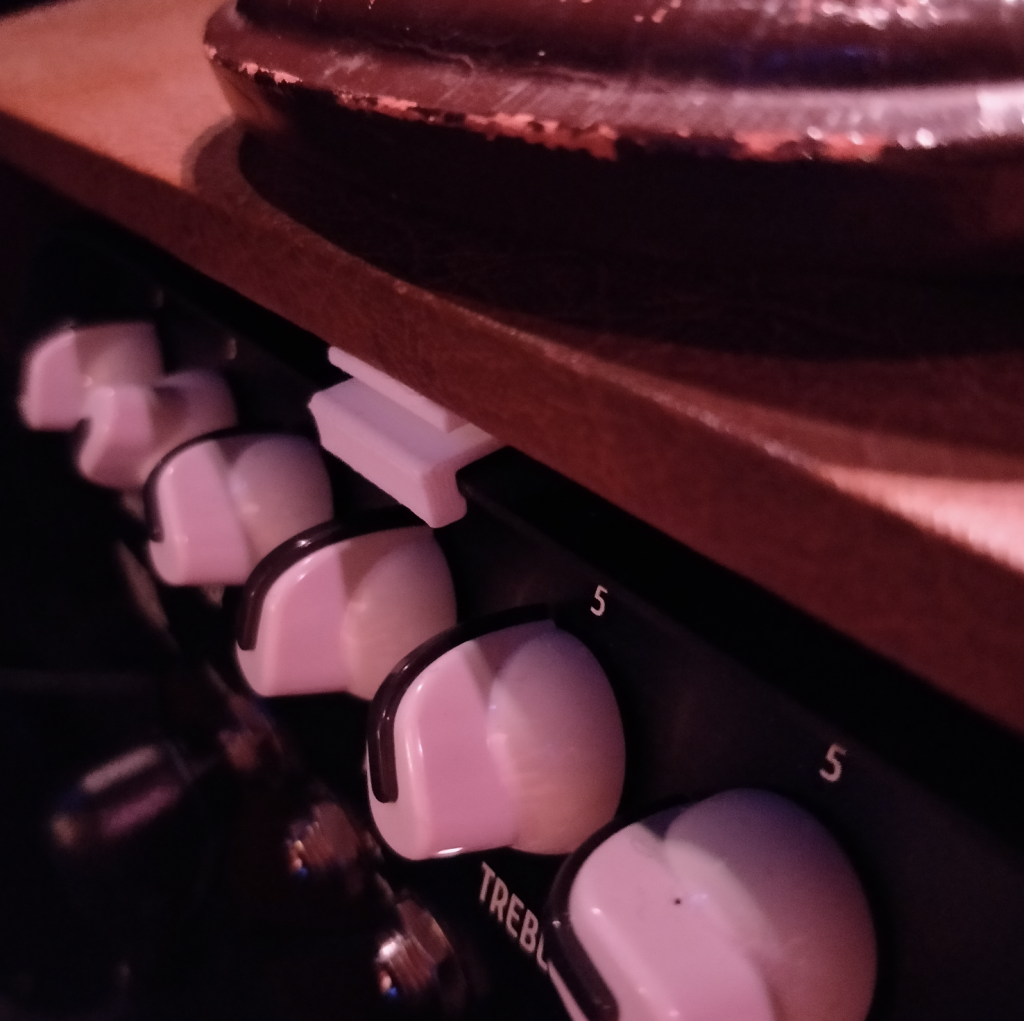
This clip has been added to the Thingiverse object
I’m using the same rig, just discovered an old ampro speaker at a guitar shop in New Orleans
Went on eBay and snatched one for $175 total shipped. Love it
Thank you for that great article, as I’m thinking of doing something similar. I bought the same version Ampro cabinet and speaker in an antique shop in California in 1994. Had no idea what it was, but according to my notes, I paid $25 thinking if either the cab or the speaker worked, it was worth it! Luckily they both were in great working order. I had no idea it was a Jensen speaker. I only know it was something like 12-16 Ohm and sounded amazing for blues. Now I might try hooking up my Hughes and Kettner Blues Master amp from the 1980s into it.